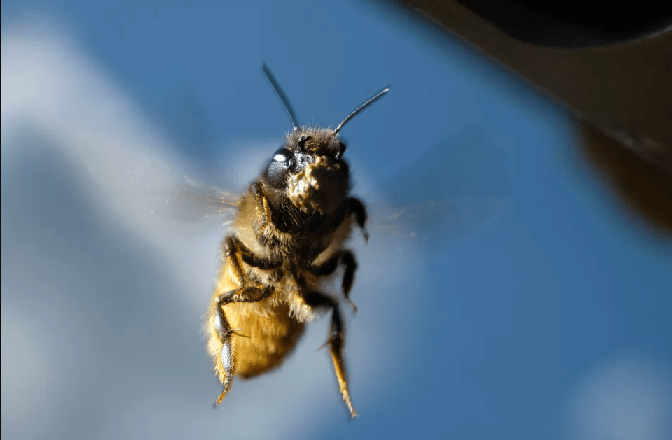Chinese scientists create an army of cyborg bees (video)

Chinese researchers are turning bees into cyborgs by implanting microcontrollers in their brains, which allows them to control the direction of their flight. According to the idea of scientists, these half-machines-half-insects can be useful for military intelligence or searching for people after natural disasters. About this informs The Telegraph.
A team led by Zhao Jialiang, a professor at the Beijing Institute of Technology, has developed the world’s smallest brain controller, weighing just 74 milligrams—less than a pinch of salt. This device is attached to the worker bee’s back and with the help of three needles penetrates its brain, forcing it to fly in certain directions.
The results of the tests were impressive: nine out of ten bees successfully responded to the signals and performed the assigned tasks. According to scientists, thanks to this technology, such “cyborg-bees” can become indispensable in secret operations and missions where human presence is unavailable.
Microdevices can be equipped with cameras, microphones and sensors, which allows insects to capture data and transmit it to the operator. Thanks to their small size, bees are able to penetrate invisibly into narrow spaces that neither humans nor large robots can reach, and do it without arousing suspicion.
“Insect-based robots inherit superior mobility, camouflage capabilities, and environmental adaptability from their biological hosts. Compared to synthetic alternatives, they exhibit enhanced stealth and increased operational endurance, making them invaluable for covert reconnaissance in scenarios such as urban combat, counter-terrorism and drug interdiction, and critical disaster relief operations.”, Professor Zhao explained.
Previously, scientists had already experimented with beetles, equipping them with microchips and wires that allowed controlling the insects using infrared radiation and Bluetooth. One such “backpack” weighed only 23 milligrams — almost three times less than the weight of the cyborg bee equipment.
Similar developments are underway in Singapore, where cyborg controllers are also being created, although they were larger and heavier and were used with cockroaches — in particular, during rescue operations after the earthquake in Myanmar. Other countries, in particular the USA and Japan, are also actively working towards the creation of cyborg insects.
Despite the successes, Zhao’s team admits that many challenges remain. The biggest problem is small batteries, which drain quickly, while larger ones would be too heavy to fly. In addition, one device cannot simply be used on different insect species, as their response to signals may differ.





